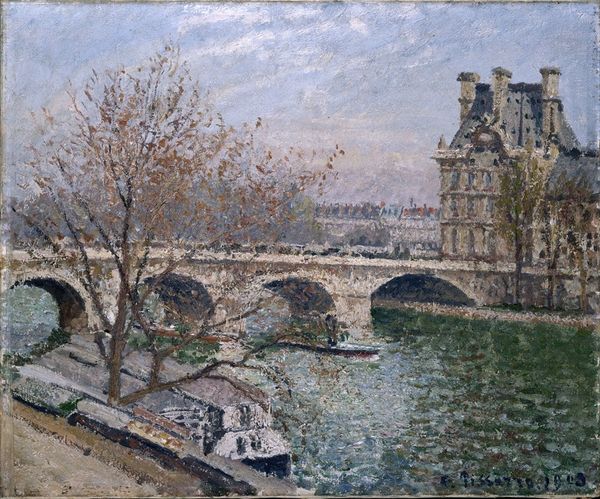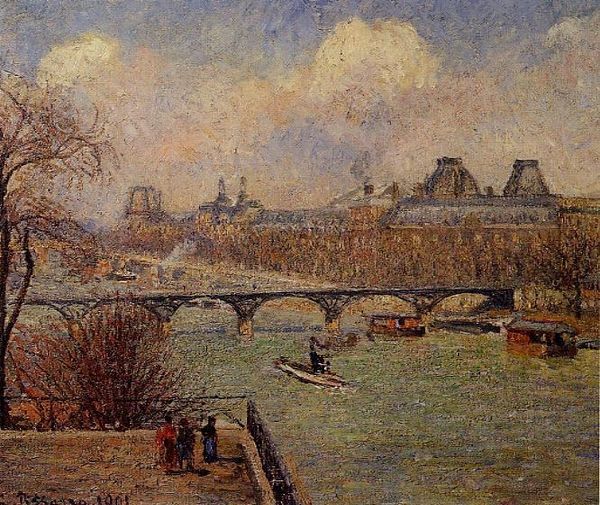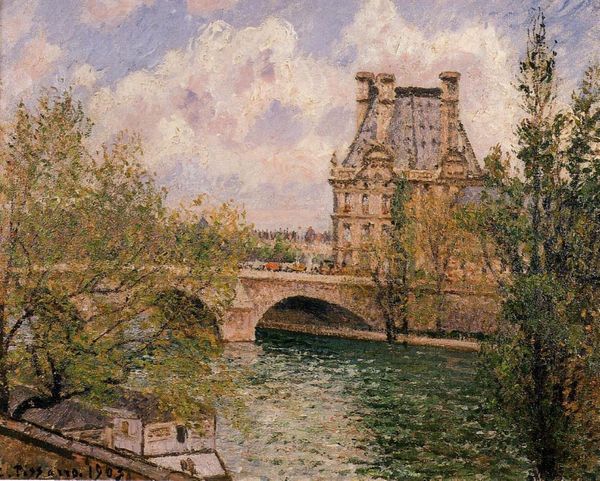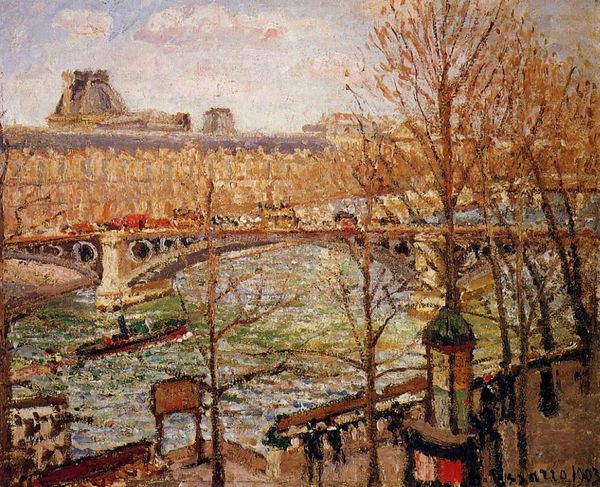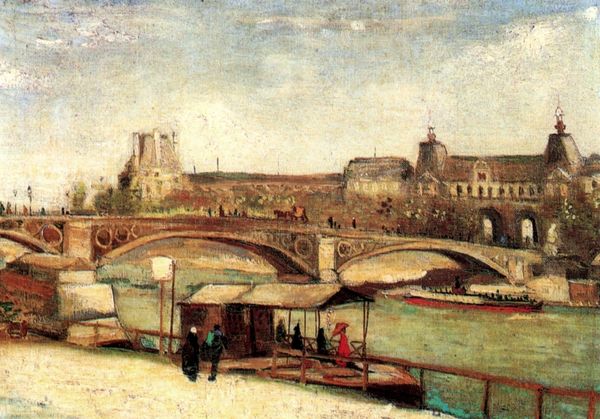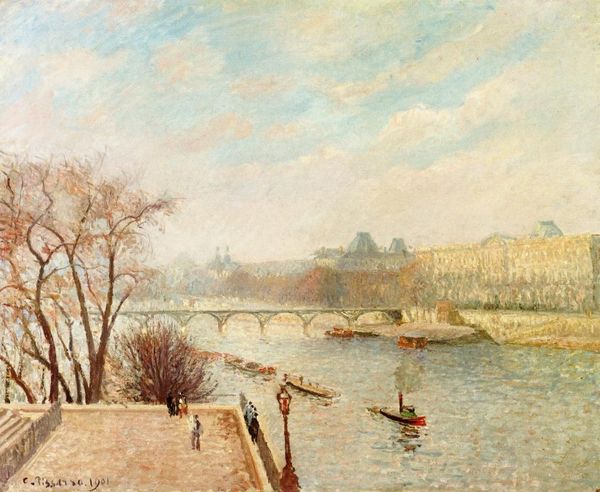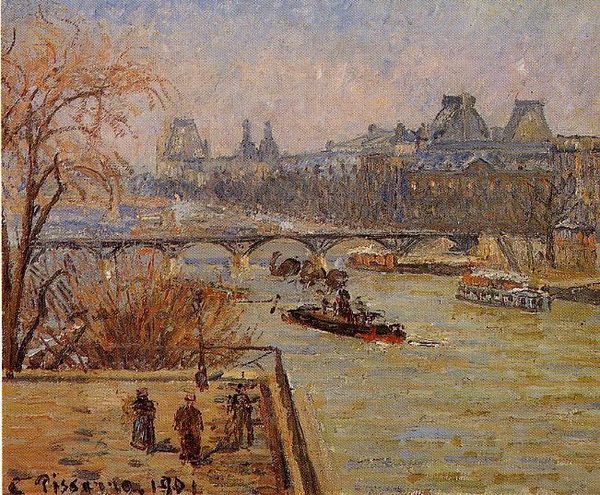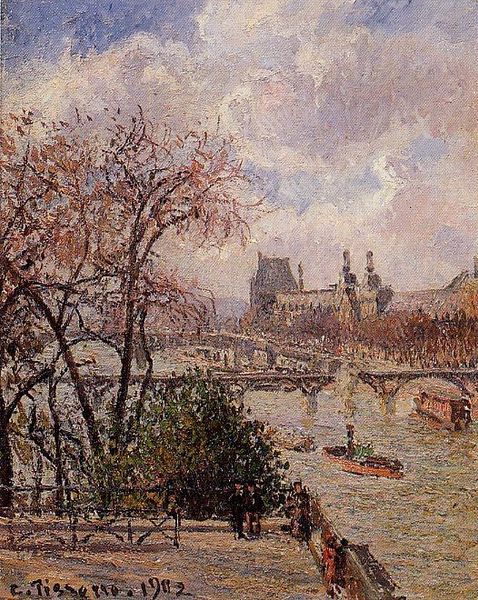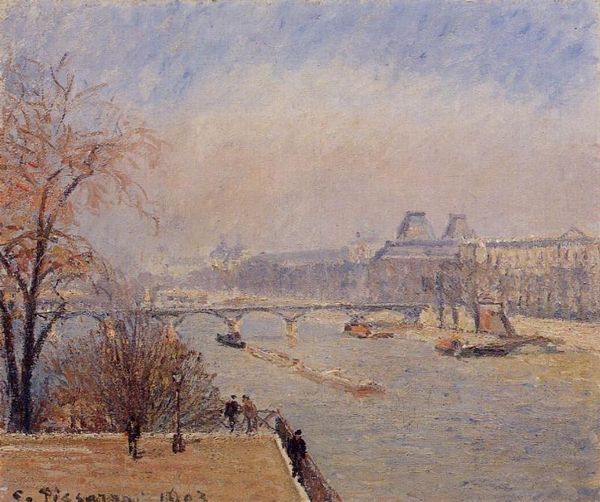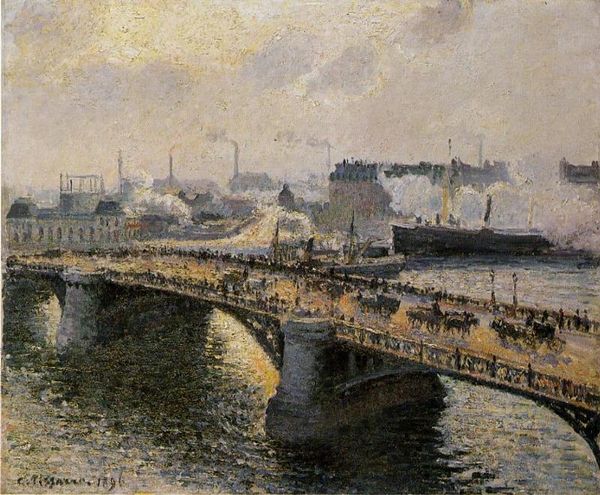
painting, plein-air, oil-paint
#
painting
#
impressionism
#
plein-air
#
oil-paint
#
landscape
#
river
#
oil painting
#
romanticism
#
cityscape
Copyright: Public domain
Curator: We’re looking at “The Pont Royal and the Pavillion de Flore” by Camille Pissarro. The painting utilizes oil paint to bring this landscape to life. Editor: There's a subtle melancholic quality that permeates the painting; it captures that transient, slightly grey feeling just before a downpour. What’s intriguing to me is the distinct layering. I'm keen on exploring Pissarro’s specific application techniques here, how his brushwork interacts with the canvas itself. Curator: Pissarro had a knack for capturing the mood of Paris and this painting showcases a section of the Seine that certainly feels industrial, though in an oddly beautiful way. Note the architecture; he emphasizes civic infrastructure within the burgeoning urban landscape. It underscores how modern life became a focus for Impressionist painters. Editor: Precisely. And that civic infrastructure relies so heavily on materials extracted, fabricated, and transported through considerable labour. I’m struck by the contrast: the solid stone of the bridge versus the fluid, almost dissolving reflections in the water. The tension between the permanence of architecture and the ephemeral nature of the environment, of light itself. I wonder, was this painted ‘en plein air’? The spontaneity in capturing the atmospheric conditions certainly suggests as much. Curator: Yes, definitely painted en plein air, capturing an unadulterated experience! And your observations on material labour prompt another important point, the economic accessibility to art itself. Who got to create, who was showcased, and to whom? Editor: A point that speaks volumes about the institutions of art history themselves. Pissarro had something of an outsider status that complicates things. His explorations with paint and brushwork highlight an individualistic, expressive mode, but also an accessibility in subject matter and portrayal that brings the artistic gesture closer to common experience. Curator: He manages to monumentalize everyday life in Paris, turning the quotidian into something worthy of contemplation, and showcasing the growing societal transformations during that period. Editor: Indeed, Pissarro gives us pause—to observe not just what is depicted, but also how those scenes reflect material realities, like accessing the site of artistic production to then transporting the artwork to sites of distribution for viewing. Curator: Pissarro provides us insight into Paris during this vibrant epoch in history, emphasizing the human connection to public spaces. Editor: Absolutely, Pissarro challenges us to examine the conditions through which those very public spaces, those captured moments in time, come into existence.
Comments
No comments
Be the first to comment and join the conversation on the ultimate creative platform.
